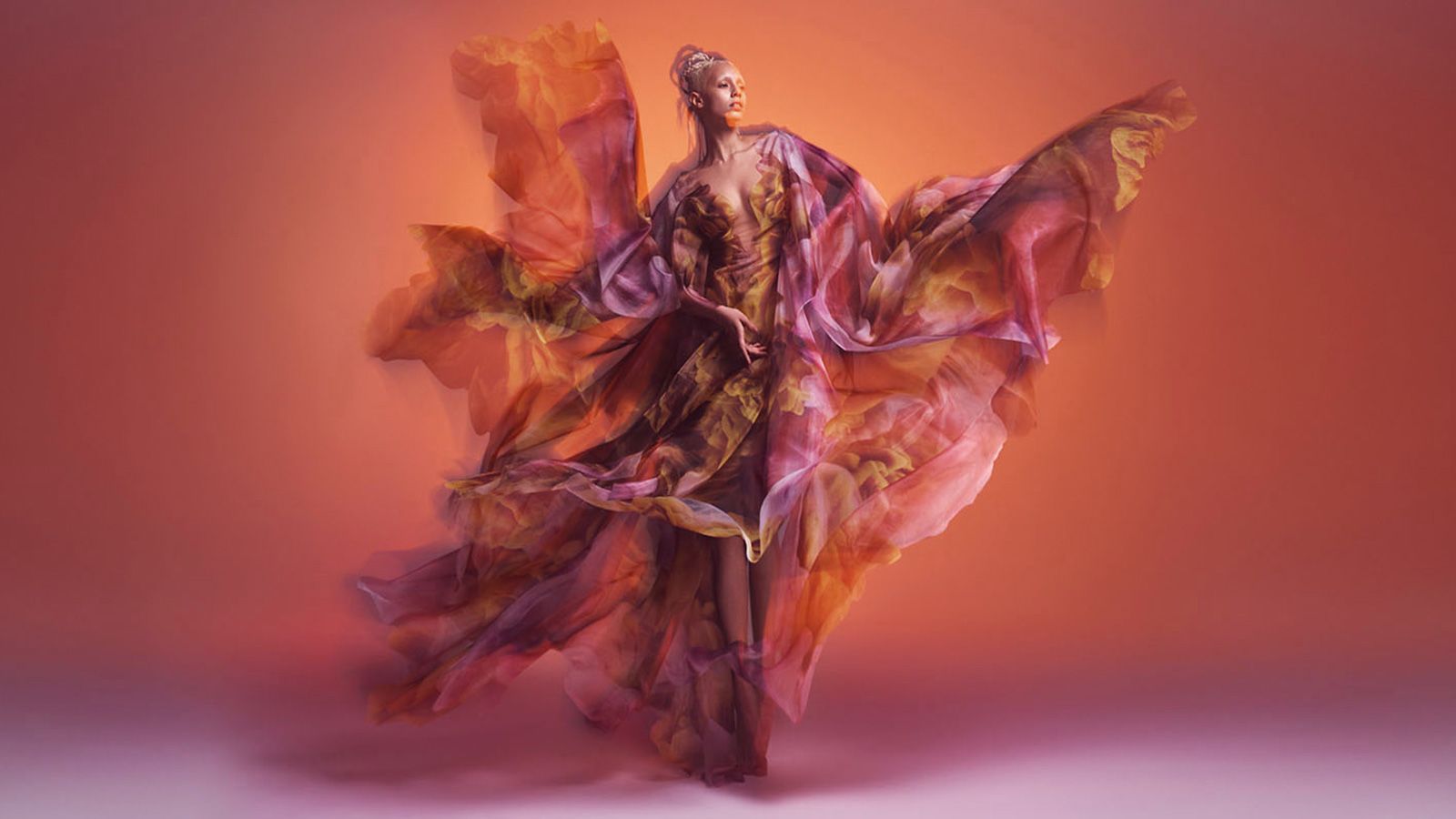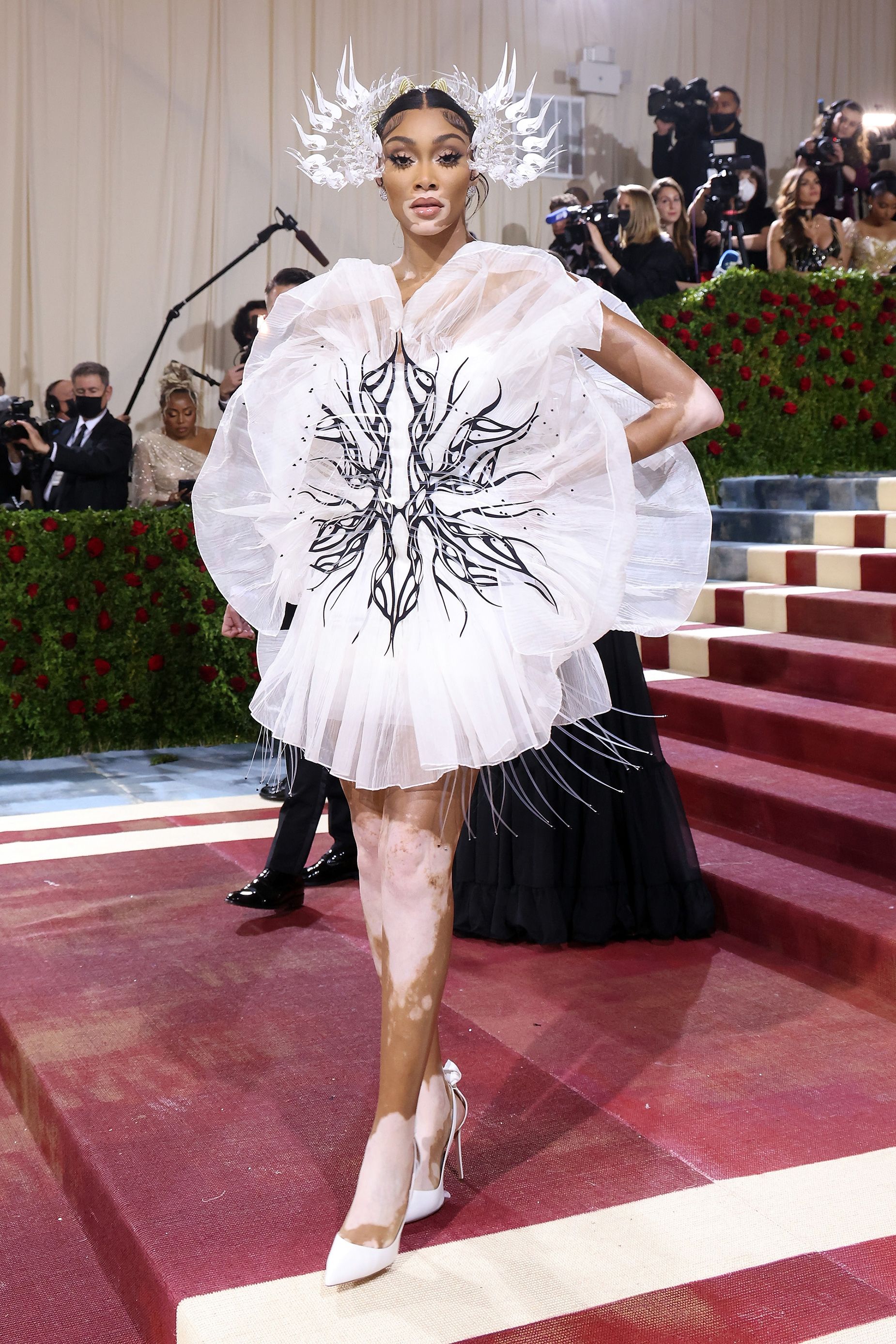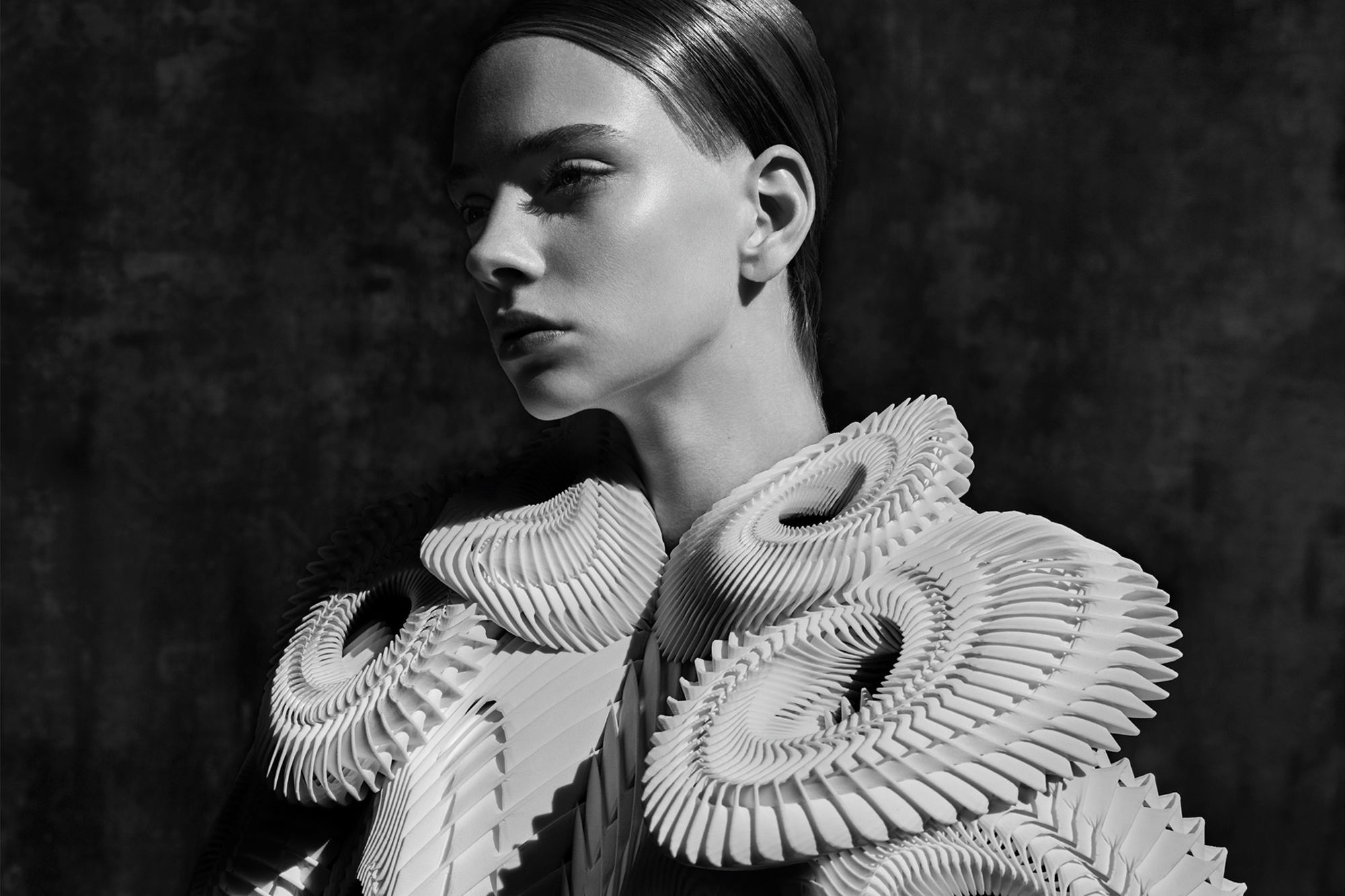Borosilicate glass, mylar film, polyurethane, glass organza, polyamide powder and thermo-plaster polymers. These are the raw materials used by Dutch couturier Iris van Herpen to create the sculptural, otherworldly confections worn by stars including Lady Gaga, Tilda Swinton and Jennifer Lopez.
Though Van Herpen may not yet be a household name, her devotees are women pushing the boundaries in culture — musician Bjork has been a long-time collaborator, and this year the couturier created a custom caped gown for Beyoncé’s record-breaking “Renaissance” world tour.
Performer Grimes wore a laser cut Van Herpen gown “inspired by distant futures” to the “In America: A Lexicon of Fashion” Met Gala in 2021, which took 900 hours to make and, in 2022, several celebrities wore Van Herpen frocks to the “Gilded Age” Met Gala, including model Winnie Harlow, and singers Teyana Taylor and Dove Cameron.

Cameron’s show-stopping spiral nebulae-inspired ensemble took over 600 hours to make and was fashioned from recycled mylar (a type of reflective shiny plastic). Carpet-side, Cameron gushed over the unexpected look to Vanity Fair, “It reminds me of a spine… I love how intricate and detailed it is.”
Now, over a hundred pieces by the designer are being exhibited in a new retrospective, titled “Sculpting the Senses,” at the Musée des Arts Décoratifs in Paris. Often inspired by rock formations, fossils and skeletons, the show dives deep into van Herpen’s web of natural influences.
“I knew I wanted this to be more than a fashion exhibition,” she told CNN via email. “I wanted this retrospective to represent all the layers of life that I’m influenced by; dance, art, science, architecture, nature, philosophy.”

Recurring motifs such as water, the human skeleton, and the natural world have evolved with each collection. Van Herpen says these references have come to her in different forms throughout the years. Growing up surrounded by water in a village along the Waal River in central Netherlands has been a continued source of inspiration: She calls water “nature’s mirror” and interprets its different colors and textures through unusual methods: Using blown glass, for example, or laser cutting . The stimulus for her skeletal designs — such as Cameron’s Met Gala gown — are a bit more elusive, as she cites both anatomical drawings and museum fossils as key starting points.
“It’s beautiful to discover the bone structures of animals that are extinct, and to look at the differences and similarities to our own internal spine structure,” van Herpen explained. Being able to move back millions of years and also imagining a spine structure a million years from now… It’s a timeless source of inspiration.”

After starting her career interning at Alexander McQueen, Van Herpen launched her eponymous label in 2007 aged 23. Since then, she has developed new ways of working with innovative materials, fusing technology and traditional couture techniques. In 2010, Van Herpen presented the first ever 3D-printed dress at Amsterdam Fashion Week (a decade later, Forbes declared the technology ‘a space to watch’). In 2011, she sent another skeletal 3D printed look made from white synthetic polymer down the runway for Haute Couture Week in Paris. The move landed her on Time magazine’s list of the 50 best inventions of 2011, and the skeleton dress was acquired by New York’s Metropolitan Museum of Art in 2012.
“Merging contemporary technology with historic skills and know-how brings the classic couture vision into today’s world,” explained Van Herpen. “I call this evolution of craftsmanship ‘craftolution,’ it’s moving haute couture into the future.”
The Dutch designer sidesteps fashion trends in favor of something more provocative, experimental and instantly recognizable. “You always know it’s her work,” photographer Molly S.J. Lowe told CNN in an interview. Lowe collaborates with the couture house and her images are featured in the book accompanying the exhibition. “It’s not only beautiful, but it’s challenging. She’s always pushing boundaries. It’s delicate but strong at the same time,” she said.
“She’s able to bring these dichotomies together and put them into a dress.”
“Iris van Herpen: Sculpting the Senses,” is on view at the Musée des Arts Décoratifs, Paris, until April 28, 2024.
